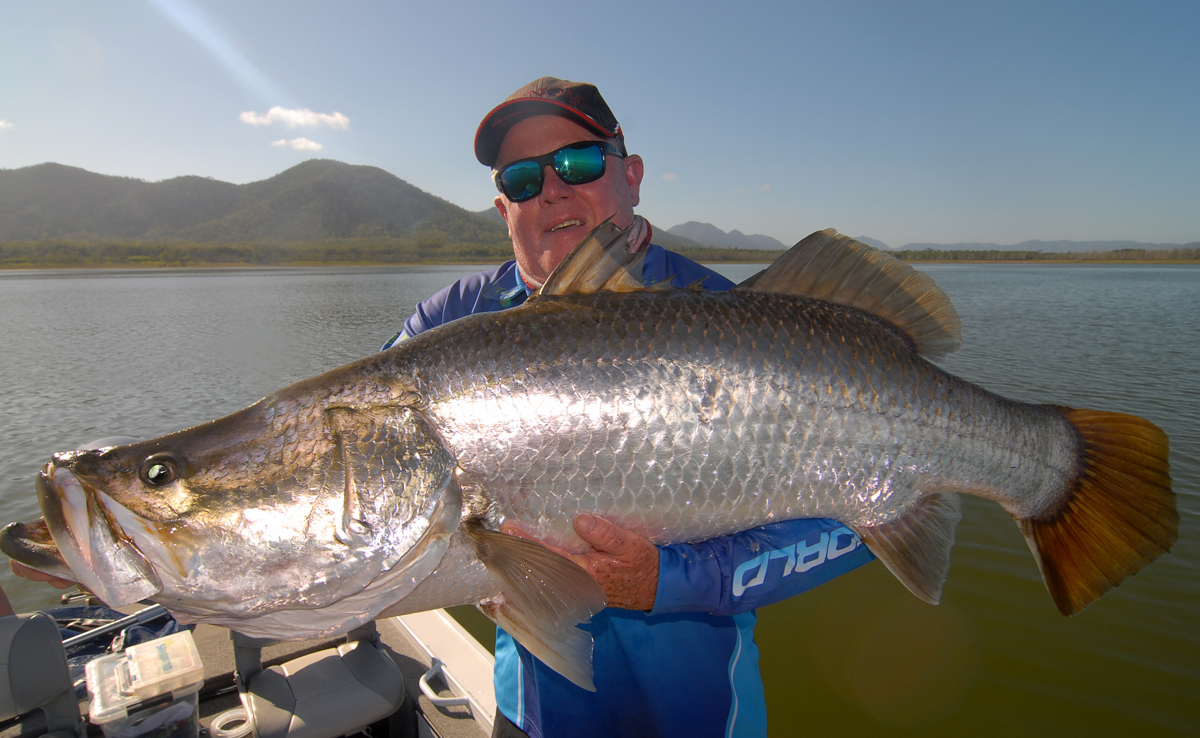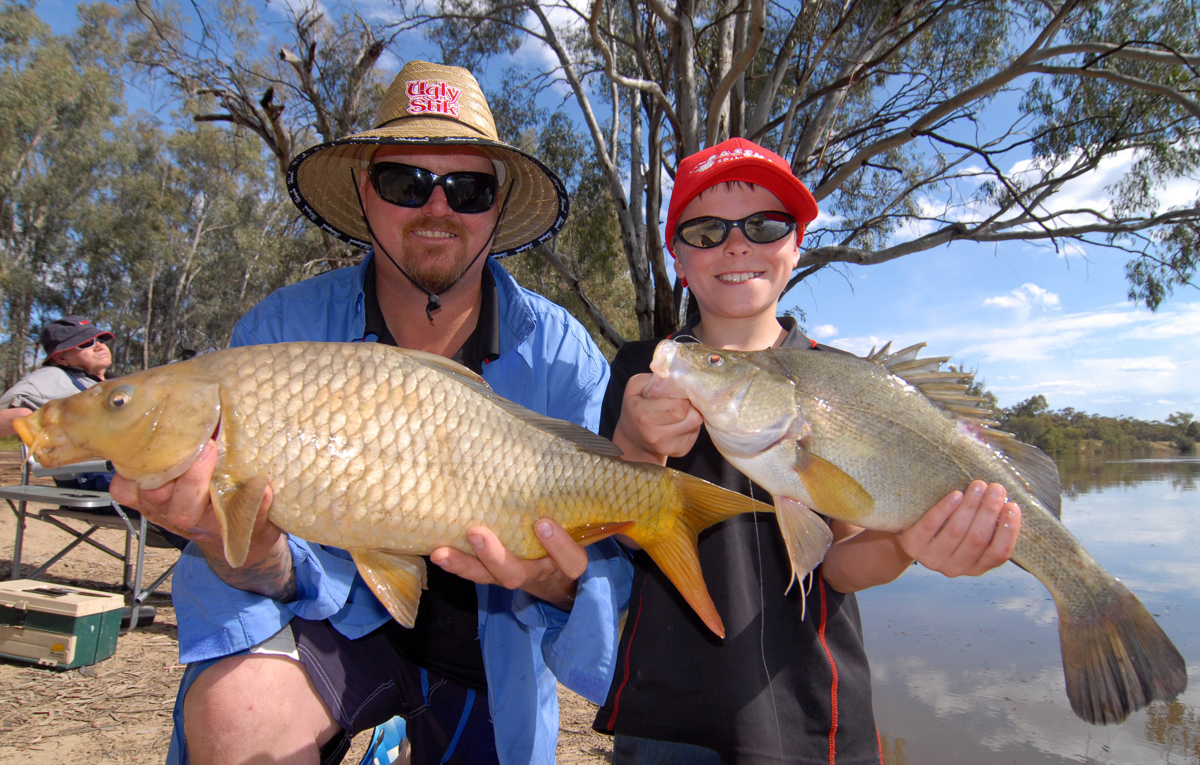WE JUST don’t know how lucky we are when it comes to fishing in Australia. STEVE COOPER reports on the wealth of wonderful fish in our waters:
I SPENT a couple of weeks in Shanghai, a vibrant city, a hub of capitalism in a Communist country; a place where you can buy just about anything you want, real or copied, and the price is negotiable. The streets are filled with familiar-looking cars with Chinese insignia, and hawkers hit the shopping centres looking for tourists to sell them imitation watches clearly inscribed with names like Rolex and TAG Heuer.
During my stay, I was fortunate enough to have a driver/interpreter for a day and decided to have a look at the local anglers and see how they fish. Knowing the popularity of fishing with Asians in Australia, I expected this would be easy. How wrong I was. After a couple of hours of driving around and not seeing anybody fishing, I decided fishing wasn’t popular in China.
Eventually my driver found a lone Chinaman fishing a backwater below a block of flats. Wearing a fly-fishing jacket, the angler was standing in the shadow of a willow tree. His tackle comprised a long, telescopic pole similar to those used on Melbourne wharves by anglers fishing for squid or trevally. There was no fishing reel, his line being tied to the end of the rod.

He cut a lonely figure, fishing in a backwater alongside a major road on the outskirts of this great, bustling city where nobody seems to stand still for more than a minute, lest they be wrapped and sold.
The Chinese angler’s catch for the day amounted to a tiny carp-like fish about 50mm long, although he assured me through my interpreter that he had managed to catch much bigger carp. Using universal sign language, he spread his hands to about 70cm apart to show me how big he has caught carp.
Most of the world’s fishing tackle is being manufactured in China but sadly, at least in Shanghai, it seems little of the product is destined for local use. I reckon that Chinese angler would have given his right arm to go fishing in Australia for the likes of yakka, mullet, carp, or maybe even a leatherjacket or small redfin.

Rarely do I come across an Australian angler who openly appreciates how lucky we are to live in this great land. To fully appreciate what we have there is a need to travel overseas and see what others lack.
We Australian anglers are so enriched by the quality of fish species that many of us are guilty of putting non-target species down – a statement of arrogance that reflects our good fortunes.
We discard or treat offhandedly many fish, even though they are good eating and fun to catch. Our most highly-sought species dominate the fishing news yet there are many other regularly caught species that anglers don’t seem to want to talk about.
The fish we catch most often are sometimes the least notable. In the salt water, this applies mainly to small, numerous fish like yelloweye mullet, sand flathead and leatherjackets. On the freshwater scene, it is all those small, ready-to-catch carp and redfin plucked from rivers and lakes that are forgotten. Truth is, we don’t know how well off we are.
A prime example occurred in the Northern Territory in early May. After a long, hot day fishing for barramundi on the Mary River system near Shady Camp, the bar and dining area at Pt Stuart Wilderness Lodge is a magnet for anglers. Thirsts are quenched, meals eaten and fish tales are the order of the day.

On this particular evening in early May the bar is crowded when a couple of locals walk in carrying a bucket full of red claw and a small saltwater crocodile. The crocodile was almost stood on, and the guys decided to “bring it in to show the tourists” before returning it. The small crocodile didn’t raise a local eyebrow, but word of the red claw haul had the bar buzzing … among the locals at any rate.
We Victorians thought little of the red claw catch because, ho-hum, well they were only yabbies after all. The locals had other ideas. In freshwater streams in northern Australia, the red claw migrate upstream to breed. This migration doesn’t sound like a big deal until you find out it occurs just once a year, and lasts no more than a couple of weeks.

Gisborne resident, Rod McFarlane, and local fishing guide, Dan Nujock, told me they had been catching the red claw at the Swim Creek crossing, about five kilometres from the lodge on the Pt Stuart Road. I was told if I wanted to catch a few, all I would need would be a torch and a bucket. No net would be required. I was intrigued and accepted an invitation to go after red claw the following evening.
Well, it was like a parking lot on either side of the causeway. Anglers had even driven the two and a half hours it takes from Darwin to catch some red claw. It might be ho-hum with yabbies down south, but in the NT this was a major event among the locals.
Sometimes the attitude to a fish depends on where you happen to be. Queensland anglers rubbish southern anglers for catching and eating sharks. In NSW, I have come across anglers who hate barracouta and rubbish salmon. This has happened because couta can be a problem when live baiting for other species and salmon seem to get in the way of the surf fishers chasing tailor.
Both couta and salmon have their attributes: the salmon is a great sportfish, and pulls and performs twice as well as tailor, while couta are no slouches on light tackle and regarded as good table fare by many.

Closer to home there are bay anglers who have been known to complain about leatherjackets or goatfish (red mullet) taking their whiting baits. Goatfish are not common, although some years there seems to be more of them than others. As for leatherjackets, they are both good eating and fun to catch. You won’t get a hernia fighting them, but any fish that can chomp its way through a fine gauge whiting hook is a challenge.
Carp have been called the rabbits of our waterways, but there are not nearly as many carp about these days in waters where Murray cod stocking has been successful. Cod eat carp, so carp are worthwhile in providing a valuable food source for our most esteemed native species. Moreover, a big carp pulls hard and long on light tackle.

As for redfin, well many anglers would rather catch redfin than trout. The problem with redfin is that they breed prolifically and, in some waters, this has the effect of reducing the average size of the redfin. However, in waters where big redfin can be caught, they offer fine sport and a tasty meal.
The next time you are fishing for King George whiting and end up catching leatherjackets, or maybe fishing for yellowbelly and catch carp, consider the plight of that lone Shanghai angler. He would take delight in being able to catch what many anglers regard as rubbish.
One of the books I took along with me to China was a selection of Mark Twain quotes. In 1864, Twain wrote: “The fish in Lake Tahoe are not troublesome; they will let a man rest there till he rots, and never inflict upon him the fatigue of putting on a fresh bait.”
The quote fitted aptly with what I found in this industrious Chinese city, and helped me appreciate what we too often take for granted in Australia.
STEVE COOPER won two Walkley Awards for investigative journalism but his great love is fishing and he is renowned as one of Australia’s foremost writers and broadcasters on the subject.



Discussion about this post